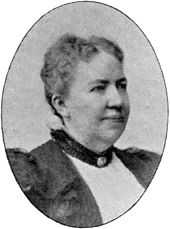Sofia Gumaelius

Sofia Lovisa Gumaelius (8 December 1840 in Örebro – 23 January 1915 in Stockholm), was a Swedish businessperson. She was the daughter of Otto-Joel Gumaelius, founder of the newspaper Nerikes Allehanda.
In July 1877, Sofia Gumaelius founded the advertising agency "Nya annonsbyrån, landsortspressens egen annonsförmedlare", generally referred to as Gumaelius Annonsbyrå or Gumaelius. It is known as one of the oldest advertising and communications businesses in the world.
In 1877 Sofia Gumaelius rented two rooms in Stockholm’s old town, intended as a temporary office. She borrowed some of the money for the start up from her brother Arvid Gumaelius and started the business off on her own. After a few months she needed to hire people and the first employee was Agda Wilson. The company quickly grew in size and within a year the office location had to be changed. In 1908 the firm built a new building in central Stockholm for their office. During Sofia Gumaelius’ lifetime offices were also established in London, Oslo, Malmö and Göteborg.
From 1881 the name S. Gumaelii Annonsbyrå was registered as an abbreviation for Sofia Gumaelius’ Annonsbyrå. In 1883 Sofia Gumaelius also established the firm Gumaelius & Co, for printing supplies. In 1918 both these firms were joint into one firm under the name S Gumaelius.
At her death, she was described as the greatest businesswoman in her country. Her business lived on beyond her death and is still active today.
As an advertising person she was known for being strongly in favour of creating truthful messages in advertising to build trust among consumers.
She differed her agency at an early stage in relation to her competitors by employing illustrators at an early stage and by focusing on ads with visual elements and slogans.
Sofia Gumaelius was socially engaged and had an interest in democracy and free publicity. For some years she was treasurer in the Swedish organisation for women suffrage, Landsföreningen för kvinnans politiska rösträtt. She was active in the Swedish journalist association Publicistklubben where she participated until her death and where she was referred to as ”The first lady of the Press” among her associates. She was the vice chairman of the women's club of her time Kvinnoklubben and was active in the women’s organisation Fredrika-Bremer-förbundet.
See also
References
- Gumælius, Sofia Lovisa, i Nordisk familjebok (Supplementet, 1924), artikeln signerad T–s = Erik Thyselius
- Sveriges äldsta reklambyrå avvecklas, 8 februari 2008 i Resumé
- Article Nerikes Allehanda 28 juli 1977,
- Valdemar von Sydow ” S Gumaelius Annonsbyrå” (1927)
- Ellen Fries : ”Märkvärdiga kvinnor” (1891)
- ”Den Svenska Historien” Bonniers Förlag,
|